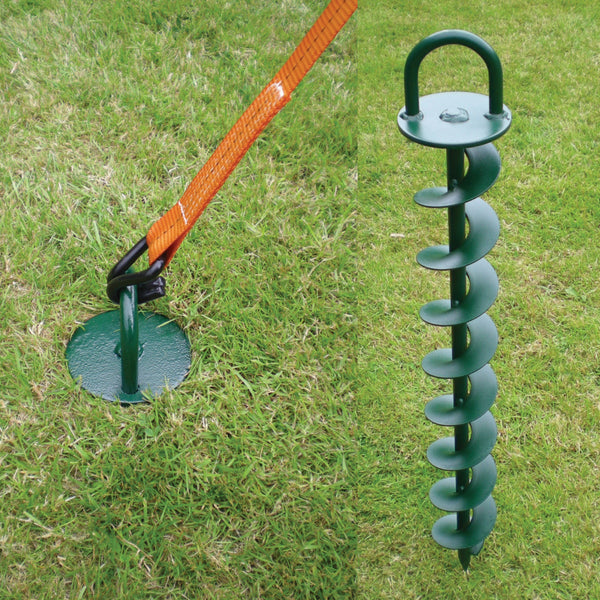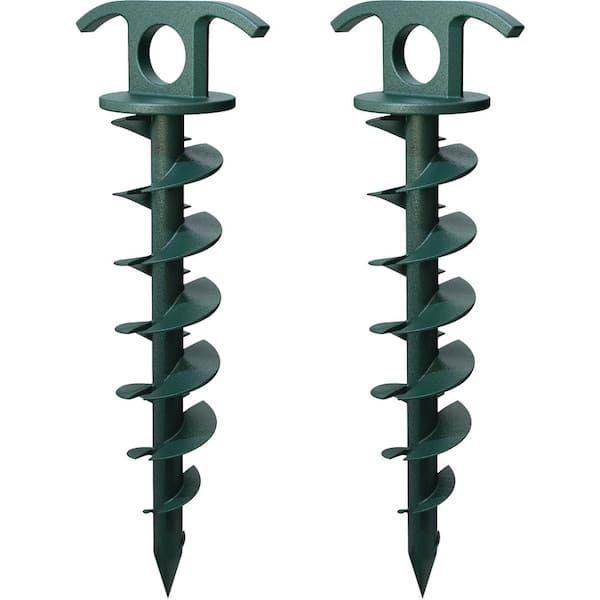Understand Why Ground Anchor Is Very Important for Safety and Toughness
Ground supports are an essential element in construction, offering important support and stability for different structures. Understanding the different kinds and applications of ground supports can illuminate their crucial role in ensuring safety and toughness.
Role of Ground Anchors in Construction
Ground supports play a crucial function in building by giving vital support and stability to frameworks. These tools are made to transfer lots from a framework to the ground, ensuring that structures and various other infrastructures stay protected under numerous conditions. Ground supports are especially important in scenarios where soil problems are unstable or where there is a risk of side activity, such as on inclines or near bodies of water.
The installment of ground anchors entails drilling right into the earth to reach steady dirt or bedrock, where the supports can be securely anchored. This procedure not just improves the structural honesty of a job but additionally minimizes the threats connected with soil disintegration and shifting. In addition, ground supports can be used in momentary frameworks, such as construction websites, where they provide needed stablizing throughout the structure process.
Ground supports additionally add to the long life and sturdiness of structures by lowering the possibility of settlement and failing. Ground Anchor. By efficiently distributing and managing tons, these important parts are critical in preserving safety and security criteria and ensuring the dependability of numerous construction projects. In general, the relevance of ground supports in building can not be overstated, as they are integral to effective engineering methods
Types of Ground Anchors


While numerous kinds of ground supports exist, each serves certain applications and conditions within building and construction tasks. One of the most typical types include mechanical anchors, grouted supports, and driven anchors.
Mechanical anchors, such as expansion anchors, utilize a mechanical action to safeguard the anchor within the substrate - Ground Anchor. These are typically utilized in light-weight applications, like protecting fixtures to masonry or concrete
Grouted anchors, on the various other hand, entail piercing an opening, placing a steel pole or cable television, and afterwards loading the annular area with cement. This method appropriates for high-load situations, supplying boosted stability and resistance to dynamic pressures usually located in heavy building.
Driven supports are usually set up by driving a steel pole or pipe right into the ground, making them suitable for temporary applications such as securing scaffolding or formwork. They are fast to set up and can be gotten rid of conveniently when no longer required.
Other customized anchoring systems consist of helical anchors, which are screw-like gadgets made use of in various dirt problems, and deadman anchors, which rely on the weight of a buried item to give stability. Each sort of ground support is designed to meet specific design requirements, guaranteeing safety and security and structural stability.
Advantages of Making Use Of Ground Supports
The benefits of using ground supports in construction jobs are substantial, enhancing both safety and structural efficiency. Ground supports give necessary resistance versus side pressures, such as soil activity, wind loads, and seismic activity. This resistance aids preserve the stability of structures, stopping potential failures that can result in costly repair services or unsafe scenarios.
Moreover, ground anchors facilitate the effective transfer of tons from structures to the bordering soil, ensuring a well balanced circulation of weight. This load transfer reduces the threat of changing or clearing up, which can endanger the stability of a structure with time. By employing ground supports, engineers can also create much more efficient designs, as they permit slimmer structural components while preserving security standards.
Furthermore, ground anchors are versatile and flexible to numerous soil conditions and task demands. Their installment can typically be completed swiftly and with marginal disruption to the surrounding atmosphere, making them an effective option for lots of building applications. Inevitably, using ground supports enhances not only the sturdiness of structures however likewise adds to a more secure working atmosphere for construction workers and future residents.
Common Applications and Uses
Various construction tasks leverage ground supports for their effectiveness in boosting stability and safety and security. These flexible parts are generally used in numerous applications throughout the building and civil engineering sectors. One common application is in preserving wall surfaces, where ground supports supply the needed assistance to stop dirt motion and preserve structural integrity.
Furthermore, ground supports are essential in safeguarding temporary structures, such as scaffolding and shoring systems, guaranteeing they continue to be stable throughout construction tasks. In the realm of foundation support, they are made use of to strengthen existing frameworks, specifically in areas vulnerable to ground negotiation or shifting dirt problems.
Ground supports additionally discover comprehensive use in slope stablizing tasks, where they help alleviate landslide threats by securing the soil to stable rock formations. One more considerable application remains in the installment of wind turbines, where they secure the base against lateral forces generated by wind, ensuring functional safety and longevity.
Moreover, ground supports are utilized in tunneling tasks to support the bordering ground during excavation. Their varied applications highlight the essential role ground anchors play in keeping security and sturdiness in various building circumstances.
Installment Best Practices
Effective application of ground anchors in numerous construction jobs depends upon reliable installment methods. Appropriate installation is essential to make certain the anchors meet their designated objective and preserve structural honesty with time. Secret best practices include complete website assessment, which entails reviewing soil conditions, lots demands, and ecological elements that might influence anchor performance.
Before setup, it is important to select the proper kind of ground anchor based on the particular application and soil qualities. Utilizing premium materials and adhering to maker specifications will enhance the anchor's toughness and effectiveness. During setup, ensure that the support is put at the appropriate angle and depth, as these factors substantially affect load-bearing capacity.
Furthermore, utilizing correct devices and strategies is crucial, consisting of drilling or driving approaches customized to the website problems. After installment, performing tons screening can validate the anchor's performance and her latest blog recognize any type of potential issues early. Normal evaluations are additionally recommended to monitor the problem of the supports and surrounding dirt. By following these installment ideal contractors, techniques and designers can boost the safety and security and durability of structures reliant on ground supports.

Conclusion
In summary, ground supports are essential components in construction, substantially enhancing safety and sturdiness. Their ability to move tons successfully reduces dangers related to unstable soil and lateral motions. The diverse kinds and advantages of ground supports, combined with their varied applications, highlight their value in both short-lived and permanent frameworks. Abiding reference by setup ideal techniques ensures optimal performance, thereby adding to the general integrity and durability of building and construction tasks.
The setup of ground supports involves drilling into the planet to get to stable dirt or bedrock, where the supports can be securely anchored.The benefits of making use of ground anchors in building and construction jobs are substantial, enhancing both safety and architectural efficiency.Many construction jobs leverage ground anchors for their effectiveness in enhancing stability and security.Successful application of ground anchors in various construction here are the findings jobs hinges on efficient setup techniques.In summary, ground supports are crucial components in construction, considerably enhancing safety and security and resilience.
Comments on “The Best Ways to Install a Ground Anchor for Optimal Performance”